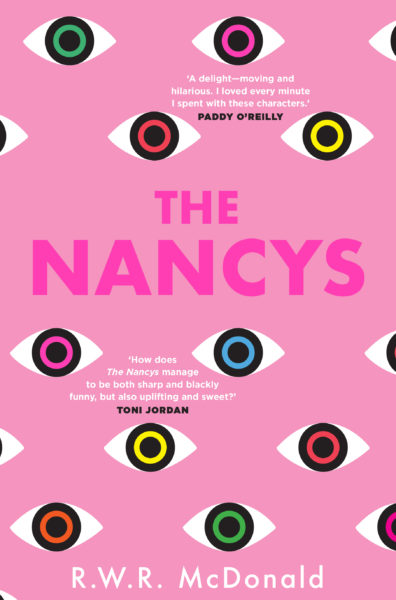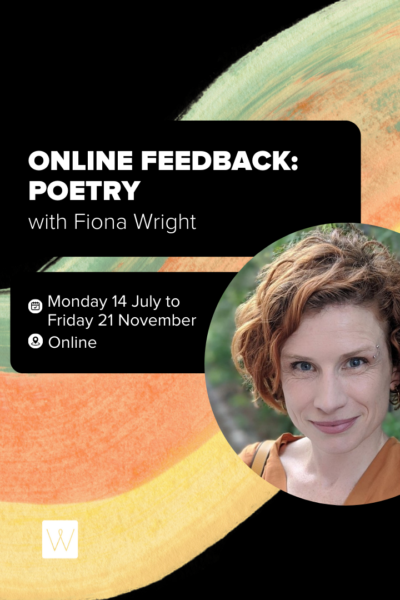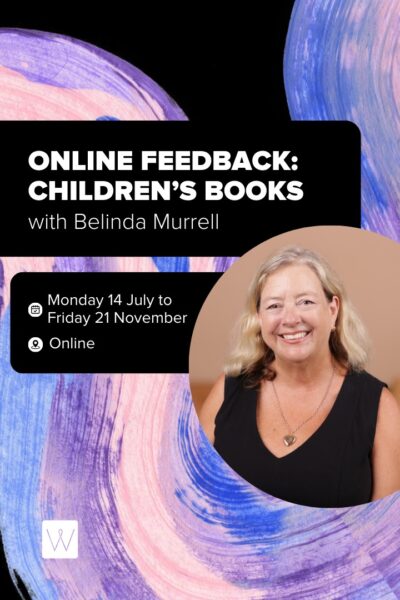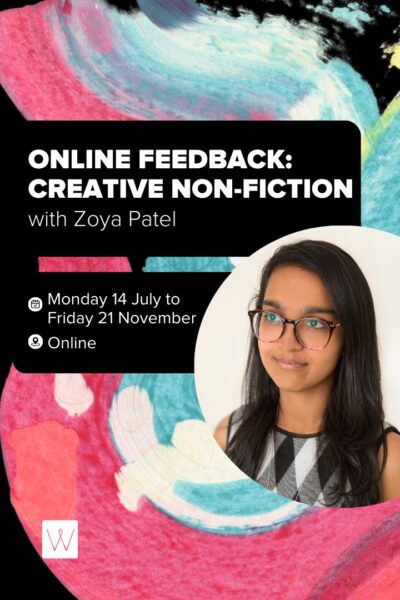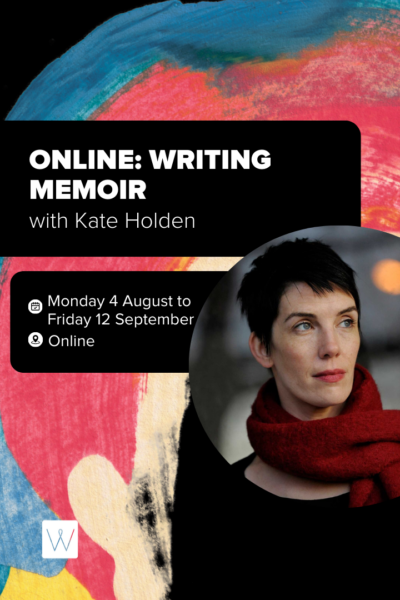Online: Character, Plot and Dialogue
 R.W.R McDonald
R.W.R McDonald
Interested in this course? Sign up for our waitlist here to find out when it’s running again. In the meantime, check out our list of current courses or sign up for our Newsbite weekly newsletter for updates.
Join this online creative writing course about writing character, plot and dialogue with RWR McDonald.
Character and dialogue are intertwined and an excellent line of dialogue can do a lot of character building in one hit. But to get to that excellent line, you need to know your character in detail before they open their mouth. The payoff is worth the effort – excellent dialogue will bring your characters to life.
‘Happy Hunger Games! And may the odds be ever in your favour!’
– Effie Trinket from The Hunger Games by Suzanne Collins
Is this course right for you? Read our FAQ >
Internet access and confidence using basic computer software are essential for this program. This interactive online course has limited places. Book early to avoid missing out.
What is said aloud, what is thought, and what is left unsaid? What is said by the character and what is expressed through action? What does a character say to their mother that may be different to what they say to their best friend, their boss, their psychologist?
Background, age, beliefs, quirks, setting, language choice – these are just a few of the elements that make up your character’s experience leading up to the moment they first appear on the page. All of these and more influence how your character communicates with the world, and how they interact with others, plotting your story’s skeleton and roadmap. Your plot not only drives your story; it should engage your reader as well.
Topics we will cover include:
- Examining who your characters are in detail
- Real-world dialogue versus written
- Cutting to the chase
- Subtext
- Using action beats
- Playing with contrasts
- Character building and revealing
- Consistency and difference in dialogue between characters
- Driving the plot
- Dialogue tags
- Plot structures and key plot points
This course involves submitting short writing exercises, and giving and receiving peer feedback. Participants will receive limited tutor feedback.
This course takes place on a website specifically designed for writers, making it simple and easy to share your writing, give and receive feedback, and interact with fellow writers.
Please expect to dedicate a minimum of 3-4 hours to coursework each week. This includes reading, responding to discussions, writing, revising and providing peer feedback. (There will be a one-week break for Easter.)
Course Outline
Week 1: Who are your characters?
We’ll start by examining who your characters are in detail, getting to know them through exploration and character questions.
Week 2: Characters through dialogue
Once we’ve started to really get to know your characters, that’s when the magic can happen. Bring them into 3D to make sure they’re realistic, consistent and ready for action. Let’s look at the fundamentals of dialogue – what makes it different to real-world speech? When it comes to adding authentic dialogue that brings your characters to life, how can you help the reader understand character and identify who is speaking?
Week 3: Dialogue nuts and bolts
This week, we’ll explore the best way to balance action with dialogue. Let’s talk about how to avoid pages and pages of description, and long scenes of characters acting like ‘talking heads’ with no movement or clear setting. Plus, we dive deep into one of the golden rules of writing: show don’t tell.
Week 4: Plot structures
This week we look at plot structures – both your story’s skeleton and its roadmap. Let’s look at a range of different plot structures and specific key turning points. What needs to happen at your midpoint? At your climax? Do you have an inciting incident? What helps stop a saggy middle?
Week 5: Successful plotting – your essential toolbox
Does your manuscript have strong plot points, defined by conflict? This week, we’ll explore the essentials you need in place for developing a successful and engaging plot for your story. We also discuss how dialogue can drive the plot forward and build suspense. Plus, a first aid kit to deal with specific plot problems – fix that saggy middle filled with plot holes!
Week 6: Suspense, foreshadowing and subtext
A plot isn’t simply a way to navigate a story from A to B. In this final week, we look at how to build suspense, foreshadow events, create subtext and multiple narrative layers. Let’s also explore some next steps for your writing, such as editing, refining, and finding the right publisher.
This interactive online course has limited places. Book early to avoid missing out.
Expected Learning Outcomes
Participants will:
- Increase their understanding of the connection between character and dialogue.
- Apply examples to their own writing to evaluate and improve dialogue and its impact on characterisation.
- Reflect on their current writing practice when it comes to dialogue and subtext.
- Experiment with different forms of communication with their characters.
Participant Requirements
You do not need to log into the course at a specific time and there are no live meetings. You will receive an email with an invitation link to join the online classroom by 10am on the day the course starts.
We’ve designed this online course to meet your learning needs. You can work through the lesson material, ask questions, and engage with fellow writers throughout the course. Internet access and confidence using basic computer software are essential for this program. Please read our FAQ before enrolling.
Please expect to spend a minimum of three to four hours per week on the course, noting that the amount of time needed to read, respond to discussions, write, revise and critique will vary from person to person. To get the most out of this course, we recommend logging in at least once a week. You don’t need to log in at a specific time.
- Participants will work through several lessons, which will open sequentially over the first few days of the course (see course dates in the blue box above).
- You can complete the lesson material in your own time.
- This course includes short writing assignments and the opportunity to give and receive peer feedback, and some tutor feedback.
More from Writing NSW
Check out our full range of in-person writing courses in Sydney, our online writing courses and our feedback programs to see how we can help you on your writing journey. Find out about our grants and prizes, as well as writing groups across NSW, and sign up to our weekly newsletter for writing events, opportunities and giveaways.
